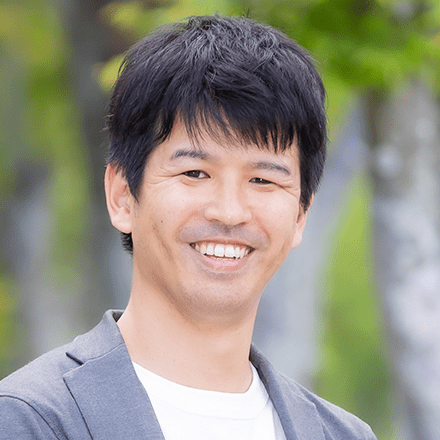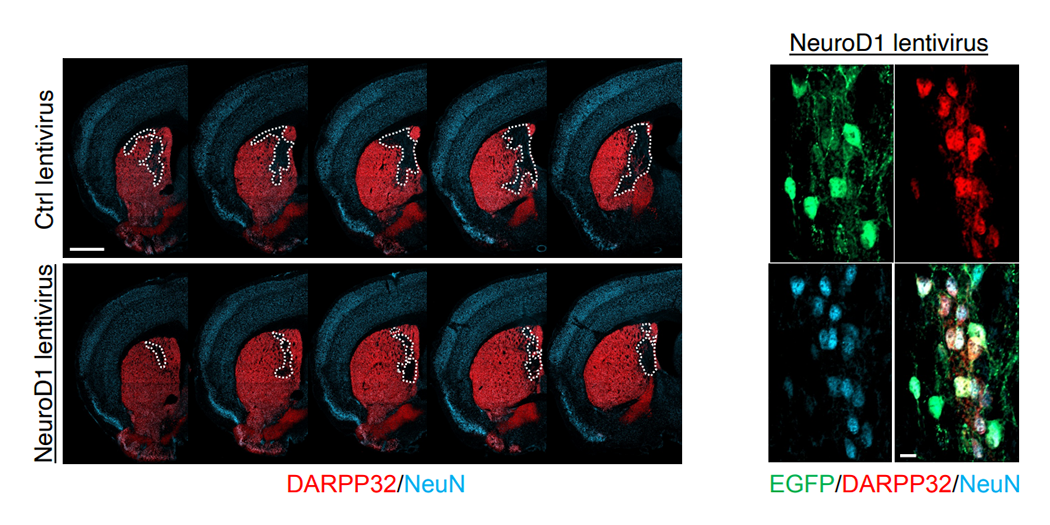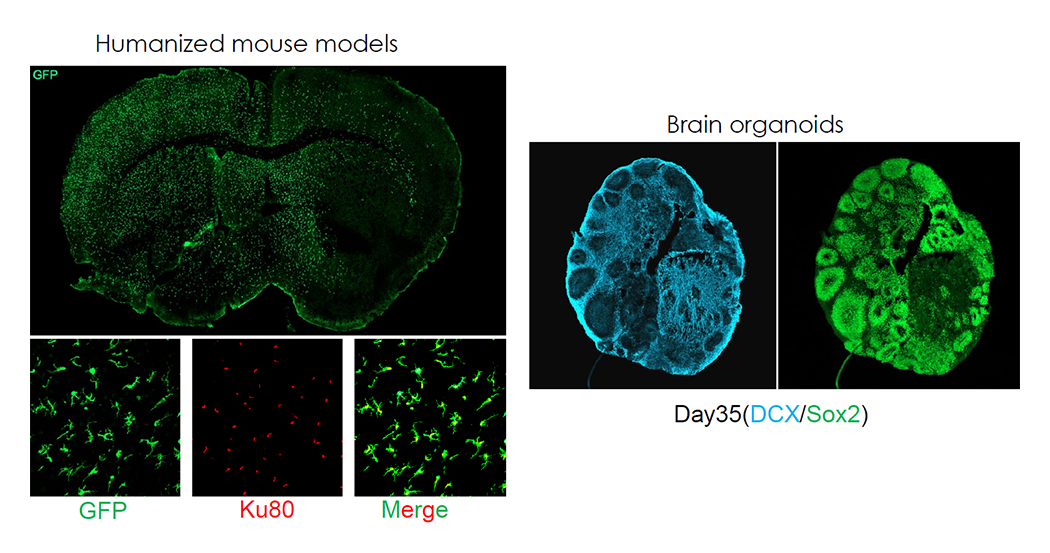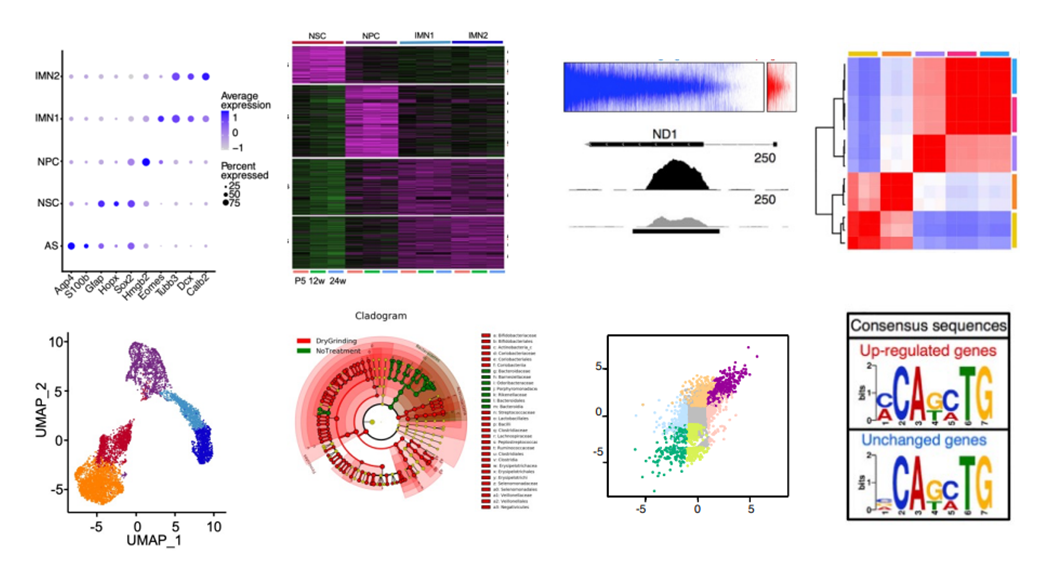Neural Regeneration and Brain Repair

- Associate Professor
- MATSUDA Taito

- Labs HP
- https://bsw3.naist.jp/matsuda/
Outline of Research and Education
Regenerating lost neural function is a highly challenging yet essential goal for scientists. We have successfully induced direct neuronal reprogramming by enforcing the expression of a single transcription factor in microglia—immune cells resident in the brain that do not naturally produce neurons (Fig.1). Additionally, we are focusing on techniques to rejuvenate aged cells through reprogramming. Using these advanced methods, we aim to develop new treatments for neurological diseases that currently lack effective cures. In addition to inducing regeneration, we use bioinformatics to analyze the mechanisms of neural regeneration at the epigenomic and transcriptomic levels. Our research is shaped by open discussions, allowing us to tailor projects to students' individual interests. We equip students with the tools and techniques necessary to tackle previously deemed impossible challenges, nurturing them into professionals sought after in academia, industry, and beyond.
Major Research Topics
Reprogramming Human Somatic Cells into Neurons
Human somatic cells are less efficient than mouse cells in undergoing cellular reprogramming, suggesting that human cells possess unique barriers to this process. However, the molecular mechanisms behind these barriers remain unclear. Our research utilizes epigenomic and transcriptomic analyses, alongside CRISPR-Cas9 screening, to identify the factors responsible for creating these barriers. By manipulating gene expression to break down these barriers, we strive to improve the efficiency of converting human somatic cells (especially human microglia) into neurons. This work can potentially improve reprogramming efficiency for neurons and various other cell types, thus broadly contributing to therapeutic developments in cellular reprogramming.
Application to Neurological Disease Treatment
Using a mouse model of stroke, we successfully converted mouse microglia accumulated in the damaged brain area into neurons, resulting in the recovery of neurological function. Moving forward, we aim to apply this technique to neurological disease treatment by establishing methods for in vivo conversion of human microglia into neurons using human brain organoids and humanized mouse models (Fig.2). This technology holds promise not only for stroke treatment but also for other conditions requiring neuronal replenishment, such as Alzheimer’s disease and spinal cord injury.
Development and Application of Novel Cell Reprogramming Technologies
Cellular reprogramming allows for the potential rejuvenation of aged cells. We are investigating the possibility of combating age-related diseases by inducing reprogramming through the expression of rejuvenating factors. Additionally, we are using reprogramming technology to investigate the mechanisms underlying memory formation and forgetting, exploring the potential for memory regeneration.
Our research utilizes cutting-edge techniques such as single-cell analysis (scRNA-seq + scATAC-seq), RNA-seq, ChIP-seq, and ATAC-seq analysis. Students in our lab will gain hands-on experience with these essential technologies (Fig.3).
References
- Irie et al., Proc Natl Acad Sci USA, 120 (42) e2307972120, 2023.
- Irie et al., Genes Cells, 28, 526-534, 2023.
- Matsuda-Ito et al., Scientific Reports, 12, 17980, 2022.
- Doi et al., Proc Natl Acad Sci USA, 118 (38) e2107596118, 2021.
- Matsuda et al., Neuron, 101 (3) 472-485, 2019.
- Sakai et al., Proc Natl Acad Sci USA, 115 (16) 4270-4275, 2018.
- Matsuda et al., Nat Commun, 6 6514, 2015.

 NAIST Edge BIO
NAIST Edge BIO


